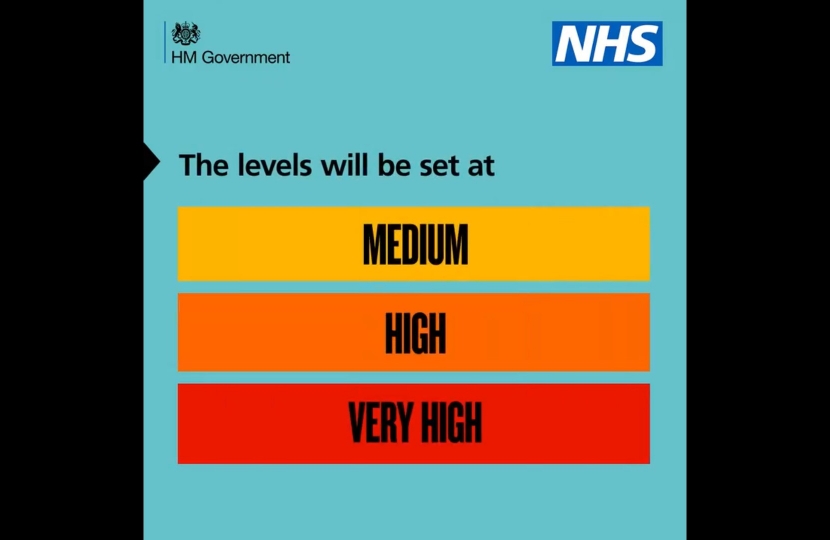
Coronavirus cases are rising rapidly across the country. In the past four weeks, the number of COVID patients admitted to intensive care units in hospitals in some parts of the country has increased sevenfold. If infections continue to rise at this rate, then in just four more weeks those hospitals could be treating more COVID patients than they did at the peak of the first wave.
The country is far better prepared for this second wave of the pandemic than it was in March; we understand far more about the virus and how it spreads. We must act now to control the spread of the virus and protect the NHS, so we can keep cancer treatments, elective surgeries and other vital diagnostic services going.
Throughout the pandemic, we have worked closely with local leaders to tackle local outbreaks with targeted restrictions. This has saved lives, and has avoided the need to apply those measures nationally. However, this has led to different rules in different parts of the country. These have become increasingly hard to understand and to enforce.
We have already simplified national rules where possible; the Rule of Six and Hands, Face, Space.
Today, the Prime Minister has set out how – from Wednesday, 14 October 2020 – we will simplify and standardise local rules further by introducing a three tiered system of local COVID Alert Levels in England. There will be three levels:
Local COVID Alert Level – Medium
This is for areas where national restrictions continue to be in place. This means:
- All businesses and venues can continue to operate, in a COVID-Secure manner, other than those that remain closed in law, such as nightclubs.
- Certain businesses selling food or drink on their premises are required to close between 10pm and 5am. Businesses and venues selling food for consumption off the premises can continue to do so after 10pm as long as this is through delivery service, click-and-collect or drive-thru.
- Schools, universities and places of worship remain open
- Weddings and funerals can go ahead with restrictions on the number of attendees
- Organised indoor sport and exercise classes can continue to take place, provided the Rule of 6 is followed
- People must not meet in groups larger than 6, indoors or outdoors.
Local COVID Alert Level – High
This is for areas with a higher level of infections. This primarily aims to reduce household to household transmission by preventing all mixing between households or support bubbles indoors. This means the following additional measures are in place:
- People must not meet with anybody outside their household or support bubble in any indoor setting, whether at home or in a public place
- People must not meet in a group of more than 6 outside, including in a garden or other space.
- People should aim to reduce the number of journeys they make where possible. If they need to travel, they should walk or cycle where possible, or to plan ahead and avoid busy times and routes on public transport.
Local COVID Alert Level - Very High
This is for areas with a very high level of infections. The Government will set a baseline of measures for any area in this local alert level. Consultation with local authorities will determine additional measures. The baseline means the below additional measures are in place:
- Pubs and bars must close. They can only remain open where they operate as if they were a restaurant.
- Wedding receptions are not allowed
- People must not meet with anybody outside their household or support bubble in any indoor or outdoor setting, whether at home or in a public space
- People should try to avoid travelling outside the ‘Very High’ area they are in, or entering a ‘Very High’ area, other than for things like work, education, accessing youth services, to meet caring responsibilities or if they are in transit.
- People should avoid staying overnight in another part of the UK if they are resident in a ‘Very High’ area, or avoid staying overnight in a ‘Very High’ area if they are resident elsewhere.
Non-essential retail, schools and universities will remain open in all levels.
A postcode checker is available at: https://www.gov.uk/find-coronavirus-local-restrictions, which shows which alert level applies in each area and the NHS Covid-19 app will also direct people to this information.
These measures will be kept under constant review, including a four-week sunset clause for interventions in 'very high' areas.
Continued Economic Support
On Friday, the Chancellor announced new support to protect jobs and support businesses whose premises are legally required to shut as part of local or national restrictions. This expansion of the jobs support scheme will help pay the wages of staff who cannot work. The Government will support eligible businesses by paying two thirds of each employees’ salary (or 67%), up to a maximum of £2,100 a month.
For more information on the Chancellor’s announcement please visit: https://www.gov.uk/government/news/job-support-scheme-expanded-to-firms-required-to-close-due-to-covid-restrictions.
FAQs
Will decisions be taken on a local authority or regional basis?
The Government will work with local leaders, as well as JBC and PHE to decide changes to alert levels. Tougher restrictions will only be introduced in areas or regions with high and increasing rates of transmission. We will keep this list under constant review.
What is the trigger point?
Decisions will be made based on a number of factors including the rate of transmission, how quickly it is increasing and the effectiveness of current interventions. That is why we aren’t setting a benchmark for the infection rate per 100,000 for moving between Local COVID Alert Levels.
We will keep the measures under constant review, including a four-week review point for interventions in 'very high' areas.
Why are so many areas in the North under restrictions where we’re seeing similar infection rates in the South?
We are seeing coronavirus cases rise across the entire country, but they are quite clearly increasing faster in parts of the North. And it is not just the young and the strong who are being affected. In the past four weeks, the number of COVID patients admitted to intensive care units in hospitals in the North East and North West has increased sevenfold. If infections continue to rise at this rate, then in just four more weeks those hospitals could be treating more COVID patients than they did at the peak of the first wave.
